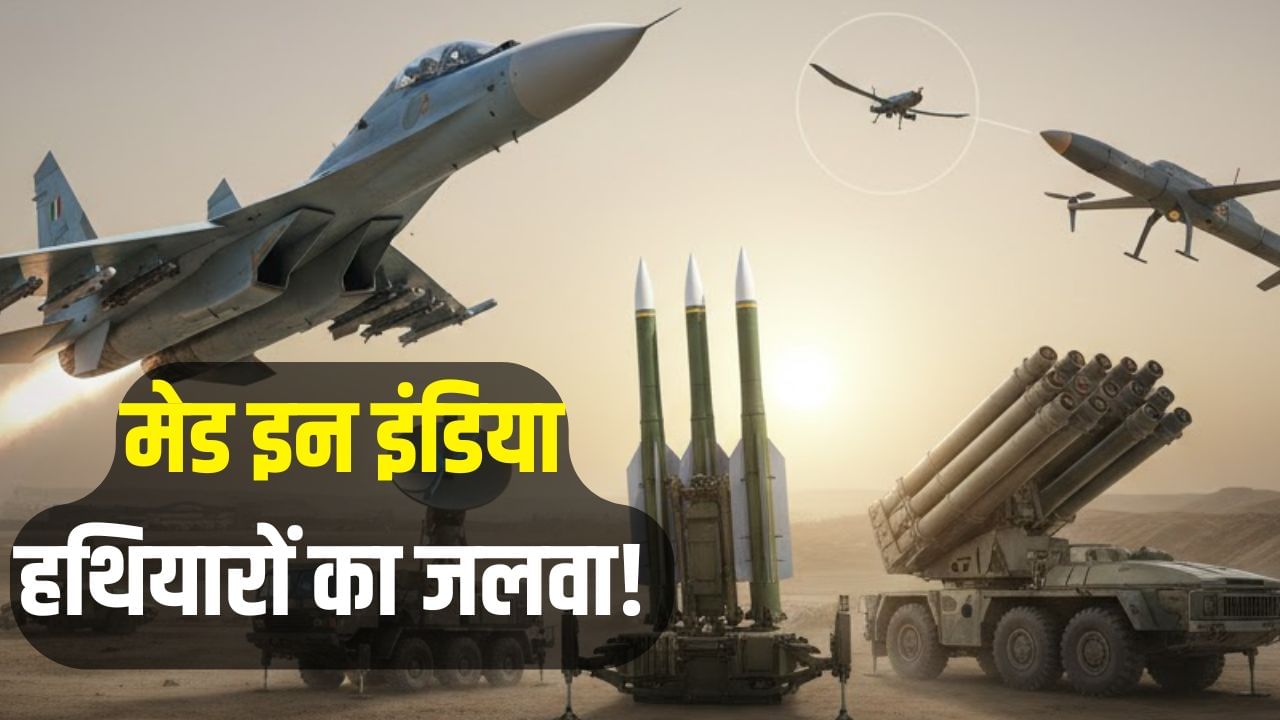Indigenous weapons created a stir
India’s ‘Operation Sindoor’ was not only a befitting reply to the Pakistan-sponsored Pahalgam attack, but it also became a great opportunity to show the power of Indian weapons to the world. Today, when India is presenting itself to the world as a big arms selling country, this operation proved to be a big advantage for India. This gave the Indian Army an opportunity to test its self-made weapons in real war-like conditions.
Under ‘Self-reliant India’, India no longer wants to remain just a country that buys arms, but is moving towards making its own weapons and selling them to other countries. Earlier India used to buy most of the weapons from abroad, but now this picture is changing. After this operation, many countries of the world have started showing interest in weapons made in India. Recently, France has also expressed its desire to purchase long-range weapons made by India.
These indigenous weapons created a stir
During ‘Operation Sindoor’, India may have used a mix of weapons made by Russia, France, Israel and its own, but this 4-day conflict gave India a great opportunity to show the strength of its ‘Made in India’ weapons. This operation became a kind of live promotion for the weapons made in India, because now they have proved themselves in war-like conditions.
1. Akash Missile System
This is a missile system made in India that can destroy an enemy flying in the sky from the ground. It achieved great success in stopping drone attacks by Pakistan. It has been deployed by both the Army and Air Force on the Pakistan border. Its biggest feature is that it can target multiple enemies simultaneously. In 2022, Armenia had ordered 15 Akash systems for about Rs 6,000 crore. The first consignment has been sent in November 2024. Now countries like Philippines, Egypt, Vietnam and Brazil also want to buy it.
2. Anti-Drone D-4 System
This system has been created by DRDO and prepared by BEL (Bharat Electronics Limited). It completely defeated Pakistan’s Turkish-made drones.
It can identify the drone, stop it and if necessary, even destroy it, that is, it can attack in both soft and hard ways.
3. Nagastra-1 and Skystriker (suicide drone)
In this operation, India also used such drones which go on their own and attack the enemy.
- Nagastra-1: It has been made by a Nagpur company. It identifies the target through GPS and attacks accurately within 2 meters.
- Skystriker: It was built in Bengaluru in partnership between India and Israel and it also performed brilliantly in operation.
4. BrahMos Cruise Missile
This is considered to be India’s most deadly and fastest missile. It was used for the first time in this operation. The Indian Air Force used it on Pakistan’s airbase, which caused a major blow to Pakistan’s air power and they were forced to retreat. BrahMos has already been sold to the Philippines for $375 million. Now many countries in Indonesia, Middle East and South East Asia are also eyeing it.
France liked Indian weapons
Recently, when French Army Chief General Pierre Schille came to India for the United Nations conference, he showed special interest in the weapon systems of the Indian Army. He especially praised the ‘Pinaka Rocket System’, which is made in India and can target the enemy at long ranges.
General Shill clearly said, “I am also changing the long-range artillery systems of my army and am very interested in seeing the Indian system.” In fact, just a few months before Operation Sindoor, France had shown interest in a long range version of Pinaka. This system is not only accurate but is also much cheaper than western weapons.
General Shill also said that “Long range systems and suicide drones are areas where India and France can work together. What was seen in Operation Vermillion is very important.” Now the interest of a developed country like France is in itself a ‘certificate’ for Indian weapons.
The world is bowing before India’s weapons
After Operation Sindoor, there has been a tremendous surge in the demand for Indian weapons. There are many concrete reasons behind this.
1. Have proven themselves in battle
Now these weapons have worked not just on paper or in the testing range, but in real war-like conditions. Be it swarms of drones, darkness of night or complex targets, the Indian system has performed brilliantly in all these. When a weapon proves effective in real war, the confidence in it increases manifold across the world.
2. Low price, great strength
Indian weapons are much cheaper than those of western countries, but there is no lack in quality. This is the best deal for countries that want powerful weapons in a low budget.
3. No dependency, reliable supply
Most of India’s systems are indigenous, that is, built by DRDO and Indian companies. With this, India can assure those countries that they will get the systems as per their requirement and there will be continuous supply.
